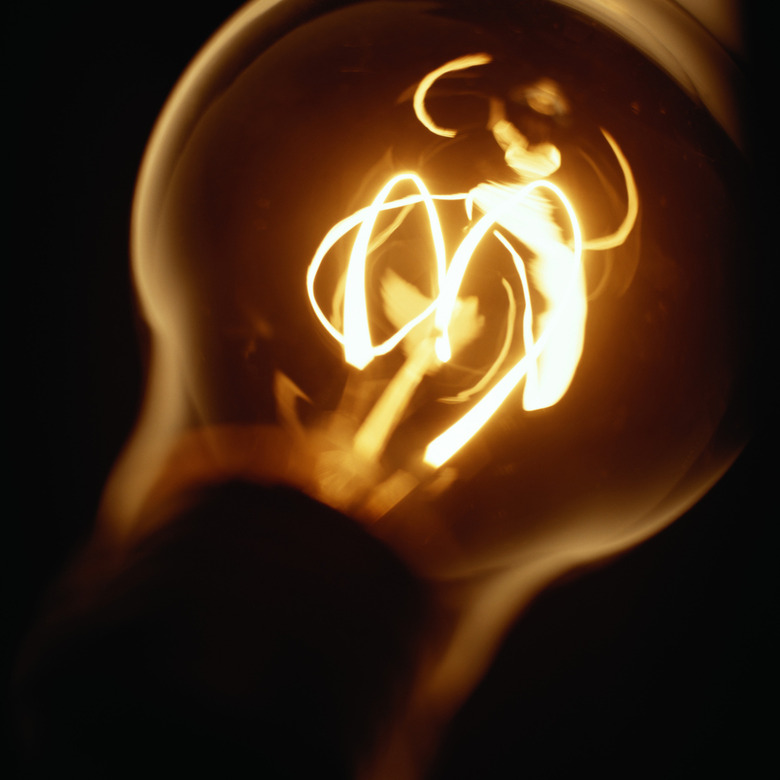Important Facts About Thomas Edison & The Invention Of The Light Bulb
Since the dawn of human history, moonlight, candles and lanterns provided the only illumination. During the first half of the 19th century, gas lighting developed and flourished. Unfortunately, gas produced a flickering light that burned down theaters and homes worldwide. Electric arc lighting, invented in 1809, was much safer but far too bright for use in a small area. A smaller light was needed, and in 1880 Thomas Edison patented the first commercially viable incandescent light bulb.
Thomas Edison
Thomas Edison
Born in Milan, Ohio February 11, 1847, Thomas Alva Edison credited his mother for the success of his ever-inquisitive mind, once saying, "My mother was the making of me. She understood me; she let me follow my bent." Edison worked as a newspaper carrier and telegrapher, but invention was his calling. From his childhood hobby of chemical experimentation to becoming a legendary inventor, he constantly tinkered with new and better ways of doing things. He patented his first invention, an electric voting machine, in 1868. From there he filed patents for the phonograph, motion picture camera, advances in telephone technology and over a thousand other inventions.
Light Bulb Pioneers
Light Bulb Pioneers
Thomas Edison did not invent the incandescent light bulb. Twenty three different light bulbs were developed before Edison's. The principle was to pass an electric current through a filament powerful enough to cause it to glow without combusting. Among the pre-Edison pioneers of electric lighting, Sir Humphrey Davy created the first electric arc lamp in 1809. Warren De la Rue designed the first incandescent light in 1820. La Rue's design depended on a platinum filament, far too expensive for any practical application. Over half a century of experimentation focused primarily on finding an inexpensive filament that could produce electric light for any useful length of time.
Edison's Experiments
Edison's Experiments
Thomas Edison and his lab associates, called "Muckers," conducted thousands of experiments to develop the electric light bulb. To make it functional, each step required the invention of a new component, from vacuumed and sealed glass bulbs to switches, special types of wire and meters. Like previous efforts, the greatest challenge was coming up with a material that could serve as a long-lasting filament. After testing thousands of materials, including over 6,000 types of plant growths, they found the best substance was carbonized cotton thread.
The Final Product
The Final Product
Edison was able to produce over 13 continuous hours of light with the cotton thread filament, and filed his first light bulb patent on January 27, 1880. Later, he and his researchers found that the ideal filament substance was carbonized bamboo, which produced over 1,200 hours of continuous light. The first large-scale test of Edison's lights occurred September 4, 1882 when 25 buildings in New York City's financial district were illuminated.
"The electric light has caused me the greatest amount of study and has required the most elaborate experiments," Edison later wrote. "I was never myself discouraged, or inclined to be hopeless of success. I cannot say the same for all my associates."
Cite This Article
MLA
Hooper, Charles. "Important Facts About Thomas Edison & The Invention Of The Light Bulb" sciencing.com, https://www.sciencing.com/important-thomas-edison-invention-light-bulb-6305/. 13 March 2018.
APA
Hooper, Charles. (2018, March 13). Important Facts About Thomas Edison & The Invention Of The Light Bulb. sciencing.com. Retrieved from https://www.sciencing.com/important-thomas-edison-invention-light-bulb-6305/
Chicago
Hooper, Charles. Important Facts About Thomas Edison & The Invention Of The Light Bulb last modified March 24, 2022. https://www.sciencing.com/important-thomas-edison-invention-light-bulb-6305/
